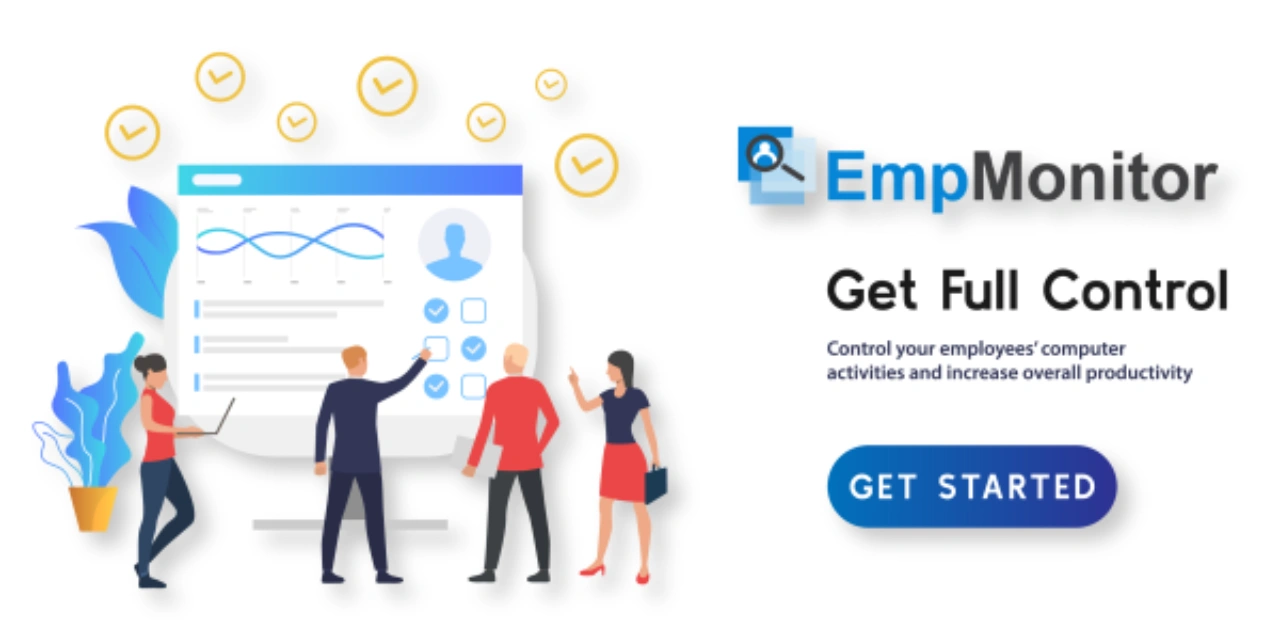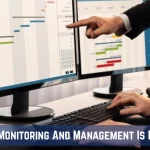Have you ever found yourself amid a project, navigating through the maze of tasks, deadlines, and team dynamics? If so, you’ve likely encountered the critical role of a lead in project management.
Effective leadership transforms the complex web of project tasks and timelines into a harmonious symphony of achievement through strategic direction and cohesive team management. Exceptional leaders excel with vision, communication, and motivation, guiding teams through challenges effortlessly. Visionary thinking, effective communication, and motivational skills significantly contribute to the success of a project, enhancing team collaboration and driving momentum toward project goals.
Let’s embark on a journey to unravel the intricacies of project leadership, discovering how the correct guidance can steer projects toward triumph in an ever-changing professional landscape. This blog aims to provide all about project management leads and their responsibilities.
Hit ‘Play’ Button & Tune Into The Blog!
What Does Lead In Project Management Mean?
A project management lead supervises a project from start to finish and makes sure it is delivered punctually, within the designated scope, and the allocated budget. It handles resources, pinpoints potential risks, and maintains communication with stakeholders.
The project management lead is also responsible for crafting project plans, establishing objectives, and defining timelines. While collaborating with teams, they ensure uniformity in project goals and outcomes. Furthermore, they offer guidance and support to team members, ensuring everyone comprehends their responsibilities.
Although an official definition for the role doesn’t exist, and it may appear (excessively) similar to the responsibilities of a project manager, there are noteworthy differences.
Lead In Project Management Vs. Project Manager
While exploring the distinctions between a project leader and a project manager, we observe that their respective roles within the project team can vary depending on the business context.
The role of a project leader involves leading specific aspects of a project or smaller projects. It encompasses tasks such as developing project plans, managing smaller teams, overseeing particular assignments, and reporting progress to higher-level management or a project manager.
Though a project leader lacks the same authority as a manager, their contribution is vital for project success. In larger organizations, a lead in project management often reports to the project manager, a transition we’ll delve into shortly.
Contrastingly, the role of a project manager entails more significant authority and responsibility than a project lead. Project managers oversee the entire project life cycle, from start to finish, instead of focusing on a specific aspect.
Their responsibilities span developing comprehensive project plans, managing the entire project team, coordinating with stakeholders, monitoring progress, managing project budgets, and ensuring on-time and within-budget project delivery.
What Does A Lead In Project Management Do?
The specifics of the lead vary depending on the company. However, every project team should explicitly define the roles and responsibilities of a project lead from the outset.
On a broad scale, a project leader’s job description might encompass the following responsibilities:
Project Planning
Collaborating with the project manager to formulate a comprehensive project plan, covering aspects such as project management timeline, scope, budget, and resource allocation.
Team Management
Taking charge of the project team, assigning tasks, and ensuring effective collaboration among team members.
Quality Assurance
Ensuring that the project aligns with quality standards and that deliverables meet stakeholders’ requirements.
Communication
A project management lead should engage with stakeholders, including clients, team members, and senior management, to maintain everyone’s awareness of the project’s progress. It also becomes essential to maintain lag and lead in project management.
Risk Management
Identifying potential risks and obstacles to the project and implementing strategies to mitigate project management challenges, depending on the project’s type and size.
Resource Management
Handling resource scheduling to keep projects progressing smoothly and preventing potential risks to the project’s success.
Budget Management
Managing the project budget and ensuring cost control measures are in place.
Reporting
Preparing various project reports, encompassing progress reports, resource utilization reports, and the final project closure report.
Problem-Solving
Identifying and resolving problems is a fundamental aspect of the project lead’s role for project success.
Leadership
Motivating and inspiring the project team while fostering collaboration among team members.
Now that the responsibilities are clarified. Let’s delve into the next section—project leader skills.
What Skills Should Lead In Project Management Have?
Following are the must-have skills a project leader must possess.
Communication Skills:
Clear Communication: Conveying ideas and project goals to team members and stakeholders. This characteristic is essential to maintain lead time project management.
Active Listening: Skill in attentively listening to team members, understanding concerns, and fostering open communication.
Team Management:
Team Building: Capability to form and lead a cohesive and motivated project team.
Delegation: Skill in assigning tasks based on team members’ strengths and expertise.
Decision-Making:
Decisiveness: Ability to make informed and timely decisions to keep the project on track.
Risk Management: Proficiency in identifying and managing project risks.
Strategic Thinking:
Visionary Leadership: Lead in project management must have the capacity to envision the project’s end goal and align team efforts toward achieving it.
Problem-Solving: Skill in analyzing challenges and finding fruitful solutions.
Time Management:
Efficient Planning: Capability to create and manage project schedules, ensuring tasks get completed on time.
Prioritization: Skill in prioritizing tasks and resources to meet project objectives.
Technical Proficiency:
Domain Knowledge: Understanding of the project’s industry or field.
Technical Competence: Proficiency in project management tools and methodologies like EmpMonitor.
EmpMonitor- Best Workforce Management Software
EmpMonitor is a comprehensive project and workforce management software designed to enhance organizational productivity, efficiency, and employee engagement.
This robust platform integrates a range of features that cater to the diverse needs of modern businesses, making it an invaluable tool for managing teams and projects effectively.
Key Features:
Time Tracking:
EmpMonitor allows organizations to track employee work hours accurately. Time tracking facilitates monitoring of project timelines, identifying productivity bottlenecks, and ensuring that tasks get completed within the specified timeframes.
Employee Monitoring:
The software provides advanced employee monitoring capabilities. It allows managers to keep a close eye on employees’ activities. It includes monitoring application usage, websites visited, and overall computer usage. This feature is essential for maintaining transparency and preventing time wastage.
Productivity Analysis:
EmpMonitor offers detailed insights into employee productivity. By analyzing work patterns and identifying peak productivity hours, managers can optimize work schedules, allocate resources more effectively, and ensure that teams work efficiently.
Project Management:
The project management module in EmpMonitor facilitates seamless collaboration among team members. It includes features like task assignment, project portfolio management, progress tracking, and document sharing. Project managers can easily oversee the status of ongoing projects and allocate resources based on real-time data.
Attendance Tracking:
The attendance tracking feature simplifies the process of monitoring employee attendance. In addition to calculating work hours, managing leaves, and generating accurate attendance reports, it streamlines payroll processes.
Employee Engagement:
EmpMonitor fosters employee engagement by providing a platform for regular feedback and communication. Managers can recognize and reward high-performing employees, boosting morale and creating a positive work environment.
Read More
7 Smart Ways To Tackle Challenges In Project Management
6 Easiest And Most Effective Ways To Manage Projects
Project Portfolio Management Tools: 7 Signs You Should Not Ignore
Pros and Cons of Lead in Project Management
Here are some pros of project lead:
- Elevated levels of responsibility and accountability
- Exposure to diverse industries and sectors
- Engaging and dynamic work environment
- High levels of job satisfaction
Following are some of the disadvantages:
- Elevated levels of stress and pressure
- Extended working hours and tight deadlines
- Navigating complex stakeholder relationships is challenging
- Difficulty in balancing project goals with organizational objectives
- Potential for burnout or a lack of work-life balance
A bright future for Lead In Project Management
Project Management Lead is a role laden with both opportunities and challenges. The elevated responsibility and exposure to diverse industries come with competitive rewards and job satisfaction.
However, the role also has some downsides. Managing high levels of stress, navigating complex relationships, and juggling between project and organizational goals are all part of the job.
Striking a balance is crucial to avoid burnout and maintain a healthy work-life equilibrium. Try to leverage project and workforce management tools like EmpMonitor. The tool helps you to streamline your workforce and enhances your project management skills. It aids you in preventing lead lag project management.
Success in this role means being strong, flexible, and finding joy in leading projects through their many challenges.













